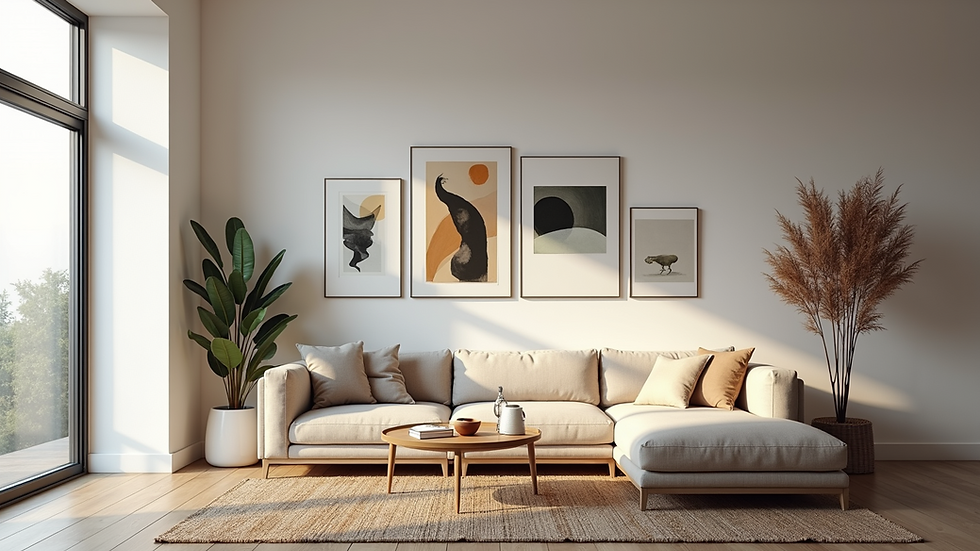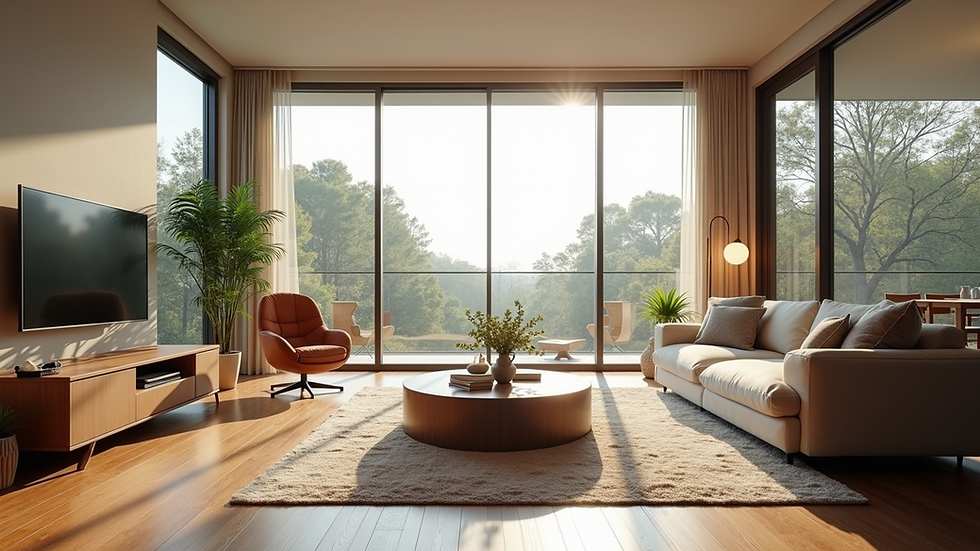Unlock the Secrets to Choosing the Perfect Wall Art for Your Space with This Enthusiastic Photographer's Guide
- ryan4garrett
- Jul 15
- 4 min read
Updated: Sep 26
Finding the Right Wall Art: Transform Your Space with Personal Touches
Finding the right wall art can truly transform your space, making the ordinary extraordinary. Wall art isn't merely decor; it reflects your personality, sparks conversations, and enhances your mood. Whether you're an experienced decorator or new to home styling, this guide will help you explore the vibrant world of wall art from a photographer's perspective. Let's jump right in!
Understanding Your Space
Before choosing your artwork, take a moment to assess your space. Look around and identify the colors, styles, and overall feel of your room. Is it calm and minimalist, or bold and vivid? Knowing the essence of your room will lead you to select pieces that enrich and complement its character.
Also, think about wall size. For instance, a large, blank wall can benefit from oversized art or a gallery of smaller pieces, while a cozy nook might call for a single intimate artwork. Don't overlook the role of lighting! Natural light can dramatically change how art appears; consider this when making your choices.
Select a Style that Speaks to You
Art is personal. What may resonate with one person may not resonate with another. Reflect on the styles that attract you. Are you drawn to abstract works, or do you prefer photography? Perhaps you enjoy minimalist designs, surrealism, or pop art—each category offers countless options.
Feel free to mix styles too. For example, a striking abstract painting can beautifully contrast with a black-and-white photograph, creating an arresting focal point. Trust your instincts as you select pieces that fit your home's existing decor.
Consider the Color Palette
Color is essential in how you relate to your wall art. A piece should either blend with or contrast your room's color scheme. If your decor features warm tones, consider art that includes similar shades for harmony. Conversely, a bold piece in cool colors can serve as a stunning counterpoint.
Understanding color theory as a photographer can enhance your selections. Pay attention to contrasts and harmonious blends. For example, artworks using complementary colors can evoke specific emotions, such as calmness or excitement, depending on their arrangement.
Scale and Proportion
The size of your wall art significantly impacts the overall balance in your space. Oversized pieces can create drama and make a room feel more open, while smaller pieces can convey intimacy. However, avoid overcrowding a wall with too many small artworks; this can confuse the visual experience.
As a photographer, consider taking your own images and experimenting with sizes to envision how they will look on your walls. Tools like mockup apps or simple sketches can help you visualize potential placements.
Frame It Right
Frames serve dual purposes: they protect and enhance your artwork. Choose styles that complement both the art and your decor. A sleek, modern frame may suit contemporary pieces, while an ornate frame could elevate traditional artworks.
Don’t overlook matting; it can add a polished touch. Experiment with colors and textures until you find combinations that resonate with your vision. For example, a white mat can make bright artwork pop, while a darker frame can provide depth.
Personal Touches Matter
Incorporate personal elements into your wall art selection that tell your unique story. This could include photographs from significant moments, art from local creators, or mementos from your travels. These pieces add character to your space and serve as cherished reminders of your experiences.
Expressing who you are through your wall art is a rewarding process. Choose what resonates with you, and let your personality shine through.
Placement Is Key
Once you've curated your collection, the next exciting challenge is placement! Here are key tips for effective display:
Eye Level: Hang your art at eye level, which is generally 57 to 60 inches from the floor, ensuring it’s easy to appreciate.
Grouping: When arranging multiple pieces, balance their size and shape for harmony. Symmetrical layouts can create a formal look, while asymmetrical arrangements offer a relaxed vibe.
Leave adequate space between artworks, about 2 to 5 inches on average, to let each piece stand out.
Lighting Your Art
Lighting can turn art from a regular visual element into a showstopper. Use track lighting, wall sconces, or picture lights to illuminate your pieces. While natural light is valuable, be cautious of direct sunlight, as it can fade colors over time.
As a photographer, you know that lighting can dramatically change a shot. The same principle holds for wall art; the right lighting brings out details and textures that might otherwise go unnoticed.
Bringing It All Together
Selecting the ideal wall art is an exciting journey, allowing you to express yourself and invigorate your space. Remember to factor in your room's atmosphere, the styles you love, your chosen color palette, and how each piece interacts.
Incorporate personal touches, and feel free to create an eclectic mix! Your walls are blank canvases ready to narrate your story, and now you have the keys to unlock their potential. Get started on transforming your space into an artful haven where personality shines through every piece of wall art!
Additional Tips for Choosing Wall Art
Explore Local Artists
Consider supporting local artists in your community. Their work often reflects the culture and spirit of the area. Plus, it adds a unique touch to your collection. You might discover hidden gems that resonate with you.
Seasonal Changes
Don't hesitate to change your wall art with the seasons. A fresh look can invigorate your space and keep it feeling current. Rotate pieces to reflect seasonal colors or themes, creating a dynamic environment.
Art as an Investment
Think of art as an investment. High-quality pieces can appreciate over time. Research artists and trends to make informed choices. This way, you can enjoy your art while also considering its potential value.

Art is not just what you see; it’s what you feel! Happy decorating!





Comments